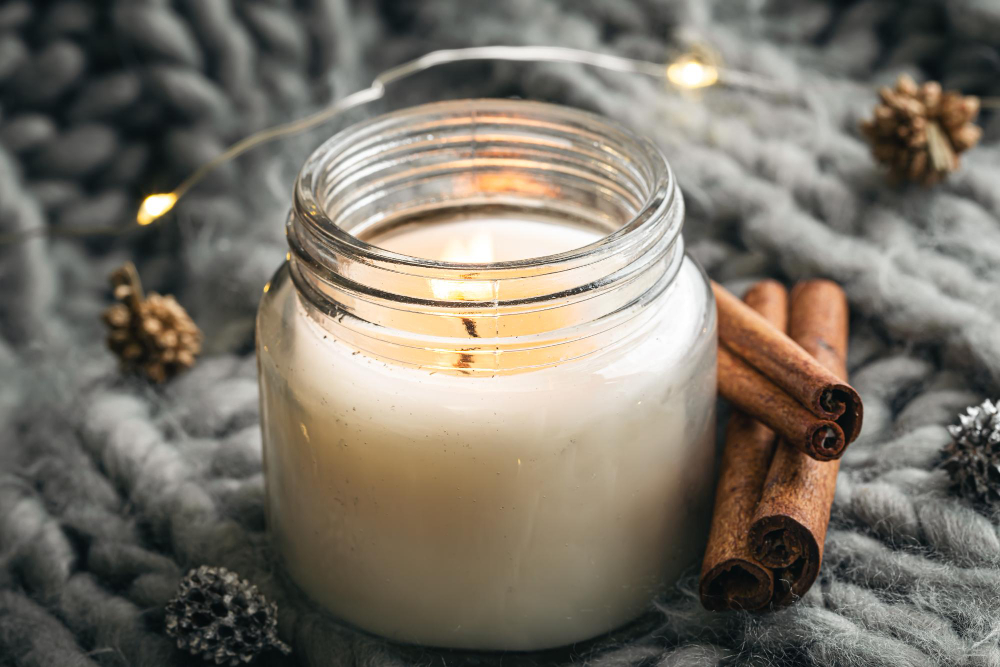Adding essential oils to your favorite candle blend is a great way to customize your candles and really enjoy the way your home or office smells. Not only is candle making a fun hobby, but you can choose essential oils to support your needs and add a touch of aromatherapy wherever you need it. Our quick guide tells you how many drops of essential oils are in a candle and which types of essential oils are the best choice for blending into your next candle concoction.
How Do I Make Candles at Home?
Making candles at home can be done with a kit or by purchasing soy wax melts and following instructions to turn them into a candle. It’s important to remember when making candles at home that you must follow all precautions to deal with hot materials, and that you should wear gloves and ensure that all items in use are heatproof.
After your candle wax is melted and not steaming hot, you can add your essential oils, give the mix a stir, and pour it over your wick, which is steadily fastened in a heat-proof candle container.
Can I Use Any Type of Material and Oils to Make Candles?
You should only use heat-proof and flame-proof materials to make candles, and your candle wax should be intended for scented candle purposes. Using the wrong materials or oils can result in serious fire risks, burns, and the inhalation of vapors that are not intended to be breathed in. Always double-check your materials and take proper precautions when candle making.
How Many Drops of Essential Oil in Candle?
How many drops of essential oil you add to your candle depends on a few different factors, such as the potency of the essential oil and the size of your candle. You’ll want to choose strong and pure oils, like these from Wholesale Botanics, so that you get the most potent fragrance.
In general, you can expect to add between 10 and 20 drops of essential oil for every two fluid ounces of candle. If your chosen essential oil is very strong, such as peppermint, you may want to use the lower end of this average. On the other hand, lighter-scented oils like vanilla and some citrus or floral essential oils can work out better if you add closer to 20 drops.
Make sure not to overload your candle with essential oils, as this can result in the candle smoking too much when burned or a foul scent. It may take a few tries to get the right combination and amount of essential oils to craft a great candle.
Which Essential Oils are Best for Candles?
The types of essential oils that are best for candles are ones that have gentler scents or ones that blend well with other base scents. For example, vanilla is a solid choice for a candle as it is pleasant, burns well, and is not too overpowering in general. You can combine vanilla with things like citrus oils, floral oils, or a small amount of a refreshing oil, such as eucalyptus.
It will take some research and time to think about what you like scent-wise to figure out which essential oils work best for your preferences and your candle mixtures.
Is It Safe to Add Essential Oils to Candles?
It can be safe to add essential oils to candles, as long as you are using your oils minimally. Adding too much essential oil or using a poor ratio of candle to essential oil can result in the candle having a bad smell when burnt or even smoking. Additionally, some types of essential oils do not smell good when burnt, and some might ruin your candle experience if they are too potent.
For example, you would not want to overload your candle mixture with both peppermint and tea tree essential oils far past the recommended amount of essential oils, as this is likely to create a poor smell and smoke.
How Many Drops of Essential Oil in Candle? Crafting Candles With Your Favorite Scents
Creating your own candles can be a fun and rewarding hobby, though it’s important to remember that if you are using essential oils, you need to make sure to incorporate these oils safely. We recommend always consulting your candle-making kit or instructions in addition to ensuring you are using the right kind of essential oils and that you add your oils minimally to prevent bad smells and smoke.
Start small with your candle making and work your way up as you get the hang of this process and figure out the best scent combinations to use.

